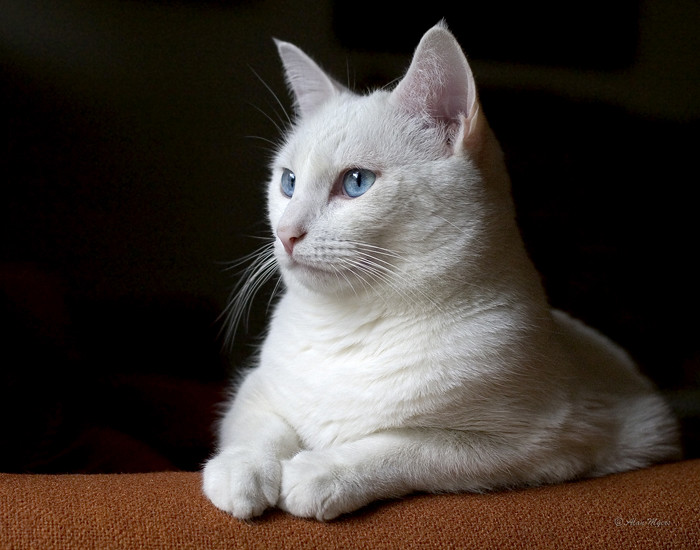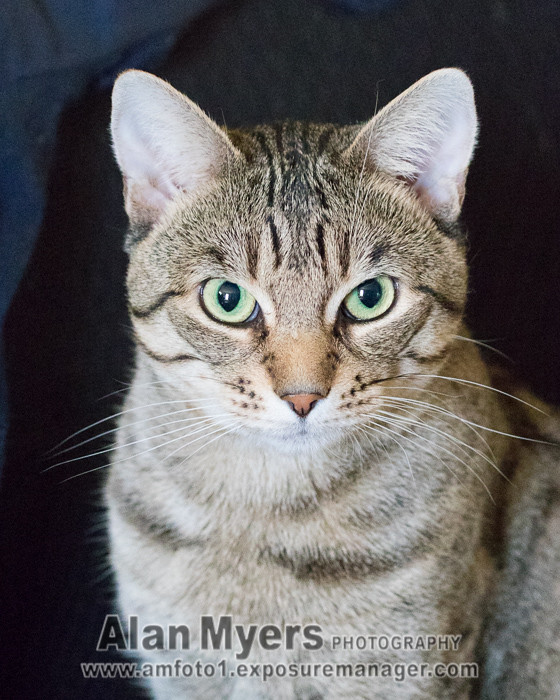Considering upgrading to FF
Jul 7, 2017 11:00:24 #
Jul 7, 2017 11:27:48 #
I did this. First with a 6d. And then added a 5d3 I'm quite happy. I use a sigma 25 to 70 (I may be off on the low end) f2.8. And a random 70-200 f2.8. The tamron is my go to lense for most shooting
Jul 7, 2017 11:57:46 #
You'll need the Canon EF glass if you move to FF. The EF-S glass is strictly for APS-C bodies and will not even mount on FF bodies.
jtram wrote:
Thanks. Im planning on upgrading glass as well, but I'm trying to decide if I will go with ef or ef-s when I do. Thinking that I'll buy ef and watch for a good buy on a used 5dii or 6d
Jul 7, 2017 14:04:15 #
amfoto1
Loc: San Jose, Calif. USA
jtram wrote:
Hi all, br br I have a Canon 60d, and love the ca... (show quote)
Yes... full frame would give you better high ISO performance and let you shoot in lower light conditions. But, it ain't cheap. Not only is a FF camera more expensive, but you also will need bigger, heavier, and typically more expensive full-frame-capable lenses to use upon it. Even if you already have an EF lens, it can be more limited on FF. For example, I do a lot of telephoto work and on my APS-C cameras often use an easily handheld, EF 300mm f/4L IS lens that costs a little over $1000 brand new... In order to frame subjects the same way with full frame, I'd need to get out my EF 500mm f/4L IS that's 8X as expensive, more than 2X bigger and heavier, and will make be less mobile because it's not practical for more than a few minutes without a sturdy tripod... or at very least a monopod.
Before you take the plunge into FF....
Are you being overly critical of your images? A lot of people evaluate their shots on their computer at "100%" or greater. That's all too easy with digital images! Assuming you have a relatively modern computer monitor set to its native resolution, with an 18MP camera such as yours, that's like making a 50" wide print and then viewing from 18" away! Of course it looks like crap! Even the Mona Lisa would, viewed like that. All you'd see is brushstrokes! This is way more critical and way bigger than most people ever use their images! If you plan to size the image for a print... even a fairly large one like an 11x14 or 13x19... viewing the image prior to re-sizing on your monitor at 33% or 25% would be a lot more realistic. If you're going to be further reducing it for online display at Internet sizes and resolutions, that will "hide" any image noise even better!
Sure, it's handy to be able to view images at 100% and higher while doing retouching and working on them. But in all likelihood YOU will be the only person who ever sees the image anywhere near that large.... Everyone else sees the finished product that's been substantially downsized. And by the time you downsize it for it's final use, other folks won't see the faults you did at high magnification.
The last DSLR that I largely limited to ISO 800 was my 6MP, 12 bit Canon 10D from 2003. Even that I occasionally used at ISO 1600, with some extra noise reduction applied to the images in post processing. That camera had no problem making fine 8x10s and sometimes even 11x14 or 13x19 at ISO 800:

Several later 10MP 30D (2006) that I graduated to, I was more comfortable using ISO 1600 and did so quite often...

My next step to a couple 15MP 50D (2008) saw a big jump in resolution (+50%)... while still able to handle ISO 1600 easily and ISO 3200 occasionally with extra post-processing effort.
Alongside my 50D (which also saw an increase from 12 bit to 14 bit), I started using a full frame 5D Mark II (2008) for even higher ISOs... 6400 easily, sometimes as high as 12800 with extra PPing. It wasn't much of a hardship for me to add FF, because I already had a fairly full kit of EF lenses from my film shooting days.
Beginning in 2010 for about five years I used a pair of 7D, took about 150,000 shots with each of them. Those use an 18MP, 14 bit sensor very similar to your 60D's... Although your camera is about a year newer and I think has a slightly improved version of the sensor. With 7D I often used 3200 and occasionally 6400... though I still preferred to use 5DII for 6400 and higher ISO shots. About that time I also started using a fairly advanced Noiseware plug-in with Photoshop, which I found worked better than the NR built into either PS or LR (which had improved a lot over previous versions), or what Canon's own Digital Photo Pro was able to do. Important to using original 7D (and most DSLRs) at high ISOs was to avoid underexposure like the plague. It's better to have to pull down exposure a little (1/3, 1/2 stop) in post-processing, than to have to boost it and amplify noise a lot. I also always shoot RAW, giving me as much as possible to work with post-processing (but essentially negating any in-camera NR). Correct workflow is also important too... I apply any noise reduction carefully, only as much as is needed for the end use, and apply it fairly early in the process before downsizing images and images are still 16 bit.... In particular, well before any sharpening is done (that's usually done last, after final sizing for the images intended use).
About a year and a half ago I updated to a pair of 20MP Canon 7D Mark II, which I'd estimate to be roughly one stop higher ISO capable than the original 7D. I have little concern about using them as high as ISO 6400. Occasionally I've used them higher... 8000, 12800... even 16000 which is the top of the camera's native ISO range (it can be extended to 25600 and 51200, though I don't do that... I'd probably only use those ultra high ISOs for black & white conversions). Below is one of my first test shots at ISO 16000 (a straight RAW conversion done in Lightroom 6 with only default level of NR, a slight boost in contrast and a minimal crop to the 4:5 aspect ratio):


As the above magnified detail shows... Yes, there's some noise at ISO 16000. But IMO it's pretty well controlled. And the image at the more realistic size & magnification is quite usable... would easily make a very good 8x10. I've sold a number of images made at 6400 and higher with my 7DIIs.
So, I guess my point is that I suspect you haven't really explored what your current camera is capable of... And/or that you may well be viewing your images overly critically. With the right techniques and maybe a little extra work in post processing, you should be able to make very usable images at considerably higher ISOs than you're imposing upon yourself. If you really want an upgrade and even higher ISO capabilities, maybe an 80D that let you use all your current lenses would be a better and more cost-effective solution than jumping to full frame. I don't use one, but it appears to have similar high ISO capabilities as 7DII, in spite of the 80D having 20% higher resolution (24MP versus 20MP). Yes, full frame 5DIII (22MP, much improved AF system compared to 5DII) or 6D (20MP, downright primitive AF system) might be even a little better... though you may not see the difference other than on your computer monitor before resizing the images or unless you make exceptionally large prints from the images. The FF cameras are generally somewhat slower shooting, may be noisier and you'll need to get accustomed to hauling a bigger/heavier kit with them, too.
Of course, I also understand G.A.S. I get it quite often, too

Just be prepared if you decide to jump into the deep end of the pool with full frame... purchasing the camera is only the beginning!
Jul 7, 2017 15:52:28 #
amfoto1 wrote:
Just be prepared if you decide to jump into the deep end of the pool with full frame... purchasing the camera is only the beginning!
I'll second that!! I'm not sure what's going on with Canon crop sensor cameras, but Nikon has a crop sensor camera that is excellent at high ISO, the D500. It will do things in indoor sports that other dx cameras can't do.
Jul 7, 2017 16:03:35 #
sirlensalot
Loc: Arizona
6D. It beats the 5D mkll in all of the categories it tests for, but like any potential camera choice, there are usually some trade-offs. Just depends on what is important to you.
Jul 7, 2017 18:44:14 #
My experience has been with many of the Rebels, 60D, 7D and then to FF. I found that the 7D has a great body but more complex than I needed. In crop I now have T2i, and 60D with EFs 18-135, 15-85, 10-22 & 55-250. I added a 6D about 30month ago, after exploring FF. It seemed the best bang for the buck. I added a 24-105L f/4 and 16-28 f/2.8 & 14 f/ 2.8. I have other glass that will go both ways 50, 85, 100mac, long stuff cover with Sig and Tamron.
I love the look of FF image and the 6 has worked great for me. Some of my contemporaries also feel the same way as I do about having a more complex system. Many have faulted the 6 on lack of point but I find it to be no problem but an asset in many cases. I have no need of an articulating screen and never use it on the 60. I have no desire for a mark 2.
J.R.
I love the look of FF image and the 6 has worked great for me. Some of my contemporaries also feel the same way as I do about having a more complex system. Many have faulted the 6 on lack of point but I find it to be no problem but an asset in many cases. I have no need of an articulating screen and never use it on the 60. I have no desire for a mark 2.
J.R.
If you want to reply, then register here. Registration is free and your account is created instantly, so you can post right away.



